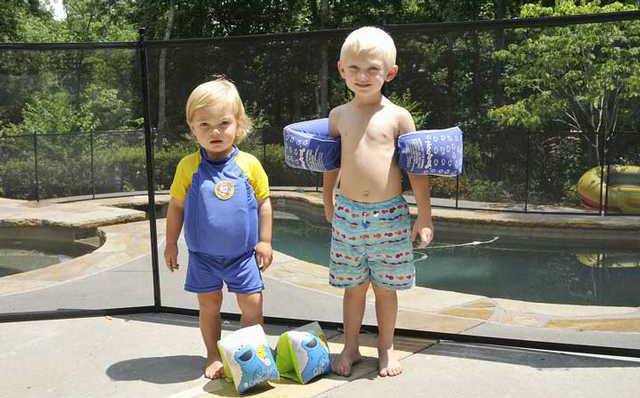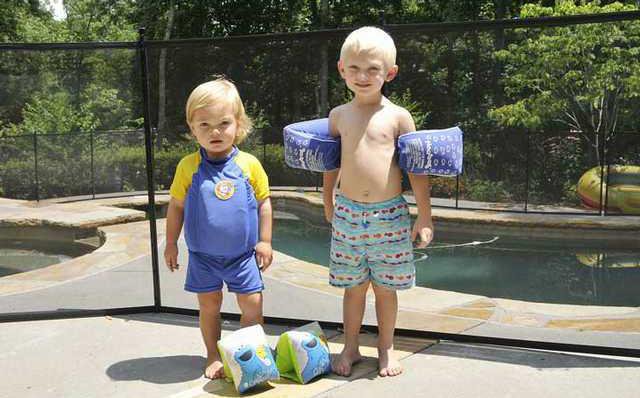0730swimaud
Listen as Josh Sanders describes how his son Elisha saved his brother.Renee Reeves’ two young grandsons swim almost every day in her backyard pool near Murrayville. She always made sure the 20-month-old, Phoenix, was dressed in a one-piece "flotation" swimsuit to keep him buoyant.
Last week, she realized that the popular suits don’t necessarily keep a child safe.
Phoenix and his brother Elisha, 3, jumped into the water to join their dad, Josh Sanders, who was already in the pool. The boys were both wearing flotation gear. But Phoenix had decided to remove the "water wings" that he usually wore around his arms.
"Wings" are considered toys and are not life-saving devices. But apparently when Phoenix had them on, they encouraged him to keep his head out of the water. Without them, his swimsuit forced him to float face-down, and he could not pull his head up.
"My son did see it right away. He was keeping a sharp eye on the boys," Reeves said.
But before Sanders could get to Phoenix, Elisha grabbed his brother, lifted his face out of the water, and pulled him to the side of the pool.
"The baby had already swallowed quite a bit of water," Reeves said.
Fortunately, Phoenix was OK. And the family was astonished that Elisha had the maturity and judgment to take action so quickly.
"We are so proud of him," said Reeves, adding that after the incident, Elisha went around telling everybody, "I hope I never have to do that again!"
But her grandson’s close call made Reeves wonder about the safety of flotation swimsuits. Not only did Phoenix’s suit fail to protect him; it could have actually caused him to drown.
Reeves said she’s looking at other alternatives now, such as putting life jackets on the boys.
Michael Lapina, ranger for the U.S. Army Corps of Engineers, thinks that’s a good idea.
"Most life jackets will have a seal or label that says, ‘U.S. Coast Guard approved,’" he said.
Lapina said if parents are shopping for a flotation swimsuit, they should look for a model that the Coast Guard has approved as a personal flotation device.
But there aren’t many that fit that description. Most manufacturers only claim that their products "give children confidence as they learn to swim." Only a handful of suits are designed to prevent drowning.
The first flotation suit to be Coast Guard-approved, the Aqua Force, has foam inserts strategically placed so that the child floats in an upright position.
Lapina said the typical suit that a parent may buy at a discount store on their way to the beach is not going to be designed that way.
"Some manufacturers may not have put the research into finding out how it floats a child," he said. "It may turn out that it floats them face-down."
He said parents should "think about where the foam is positioned and sewn in. If there’s more buoyancy on one side, it will flip you in the other direction."
How can companies sell products that may be unsafe? Because flotation suits are relatively new and there are no design standards. And it can take years to get certified as a life-saving device.
"They have to go through rigorous testing in order to get Coast Guard approval. It’s expensive," said Dave Wall, spokesman for the U.S. Coast Guard Auxiliary’s operations center in Flowery Branch.
Lapina said after buying a new flotation suit or life jacket, parents should watch how the child moves in the water while wearing it.
"Observe how the suit works, see if they flip over in it," he said.
And even if the suit works well, it is no substitute for supervision. "Don’t get overconfident and think you don’t have to watch your kids," Lapina said.
He also strongly recommends that children should take swimming lessons, if possible. But even a child who has had lessons should wear a life jacket in the water, "in case he gets a cramp or gets tired and is not able to keep swimming," Lapina said.

